August 2023
August 16, 2023
Pittsburgh Field Club Elevator
The golf course at the Pittsburgh Field Club features a 75-foot-high elevator that connects the 17th green to the 18th tee box. As far as I know it's the only golf course in the world that includes an elevator.Some info from the website of the Field Club:
Posted By: Alex - Wed Aug 16, 2023 -
Comments (5)
Category: Golf
Chrome
Let us all know if/when you bail.The band's Wikipedia page.
Chrome is an American rock band founded in San Francisco in 1976 by musician Damon Edge and associated with the 1970s post-punk movement.[3] The group's raw sound blended elements of punk, psychedelia, and early industrial music,[4] incorporating science-fiction themes, tape experimentation, distorted acid rock guitar, and electronic noise.[5] They have been cited as forerunners of the 1980s industrial music boom.[6] They found little commercial success as part of San Francisco's 1970s music scene...
Posted By: Paul - Wed Aug 16, 2023 -
Comments (4)
Category: Eccentrics, Music, 1970s, Cacophony, Dissonance, White Noise and Other Sonic Assaults
August 15, 2023
Warming Pills
Glycine is readily available as a supplement. I hadn't heard about its supposed warming properties.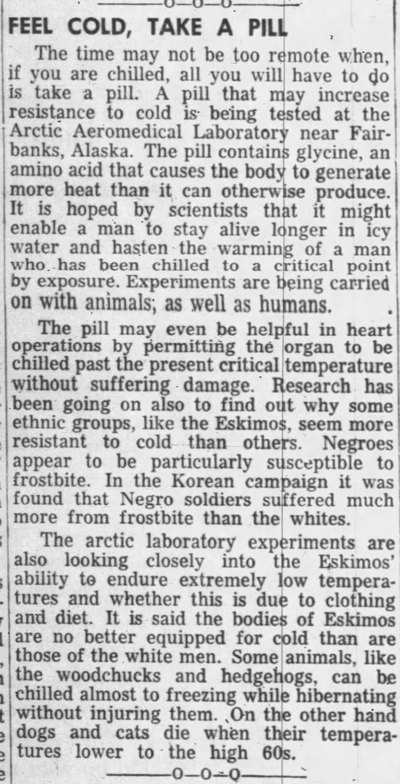
Scranton Times-Tribune - July 25, 1957
I searched for the research that inspired the newspaper report above and found a 1956 study, conducted at the Arctic Aeromedical Laboratory, that involved immersing dogs in freezing water. The researchers measured how long it took for the rectal temperature of the dogs to lower to 26°C. Dogs that had been given glycine took longer to chill (and warmed up more rapidly) than the control group:
The intravenous administration of a 5% glycine solution caused a significant increase of 34.6 minutes in the time required to lower the rectal temperature of dogs from 38°C to 26°C. Total rewarming time was decreased by 34.3 minutes in the glycine treated group. The differences in cooling and rewarming rates between the treated and non-treated animals was due to the increased heat production observed in the dogs receiving glycine. The possible applicability of thermogenic agents in accidental hypothermia is discussed.
However, I then found a 1961 study, also from the Arctic Aeromedical Laboratory (but this time conducted on humans) that seemed to cast doubt on the warming properties of glycine:
I think I'll stick with whiskey for warmth.
Posted By: Alex - Tue Aug 15, 2023 -
Comments (3)
Category: Experiments, 1950s
Miss Juke Box, Revisited
A few months ago, I made a post titled "Miss Juke Box" that involved a song of that name. But now, with more diligent research, I actually find some beauty contest queens under that rubric. Alas, I cannot identify the woman in the first photo.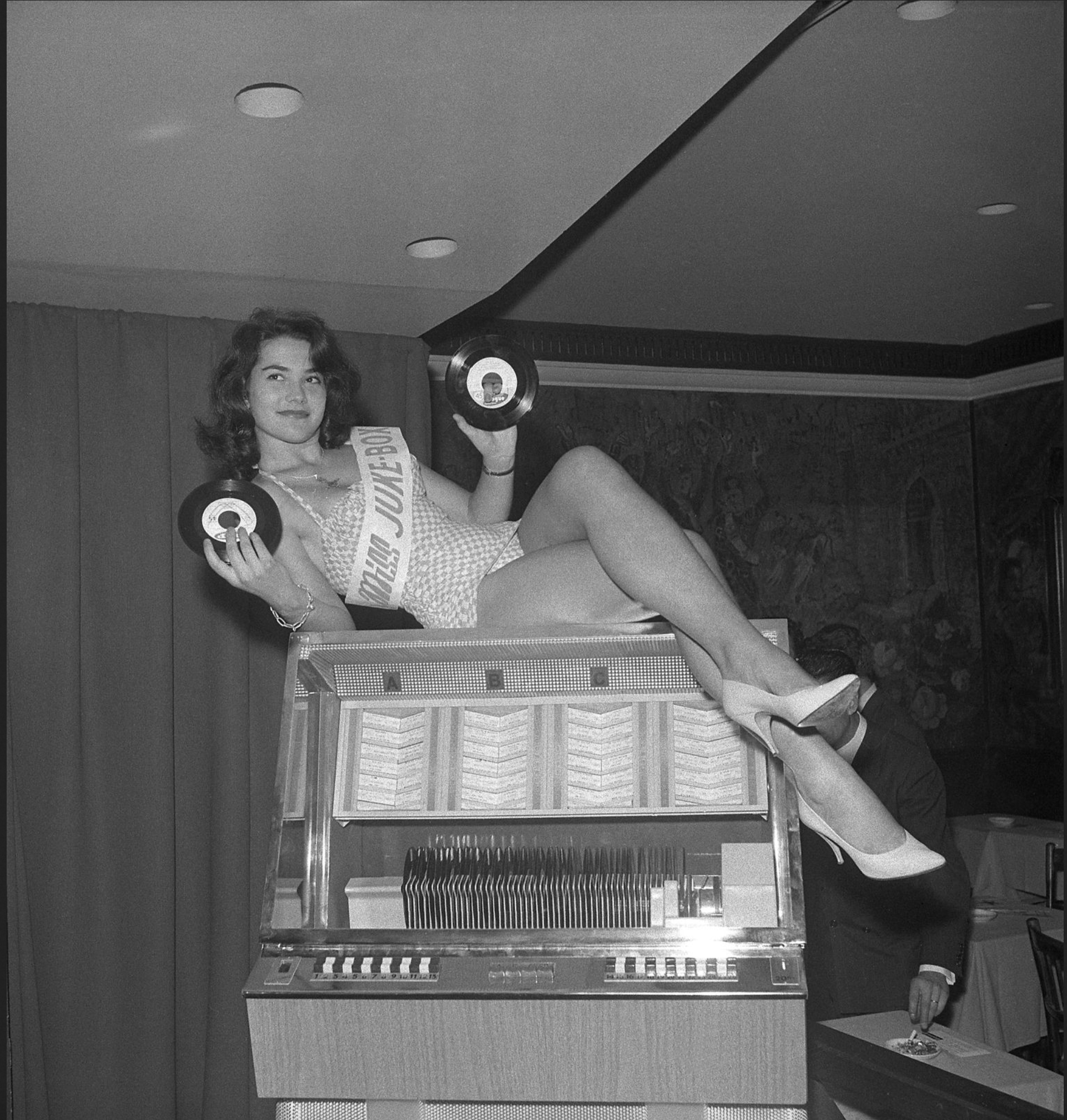
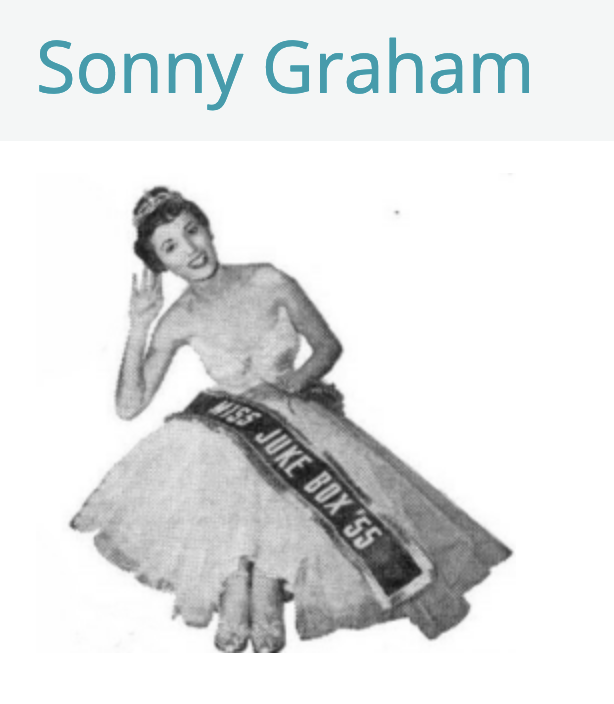



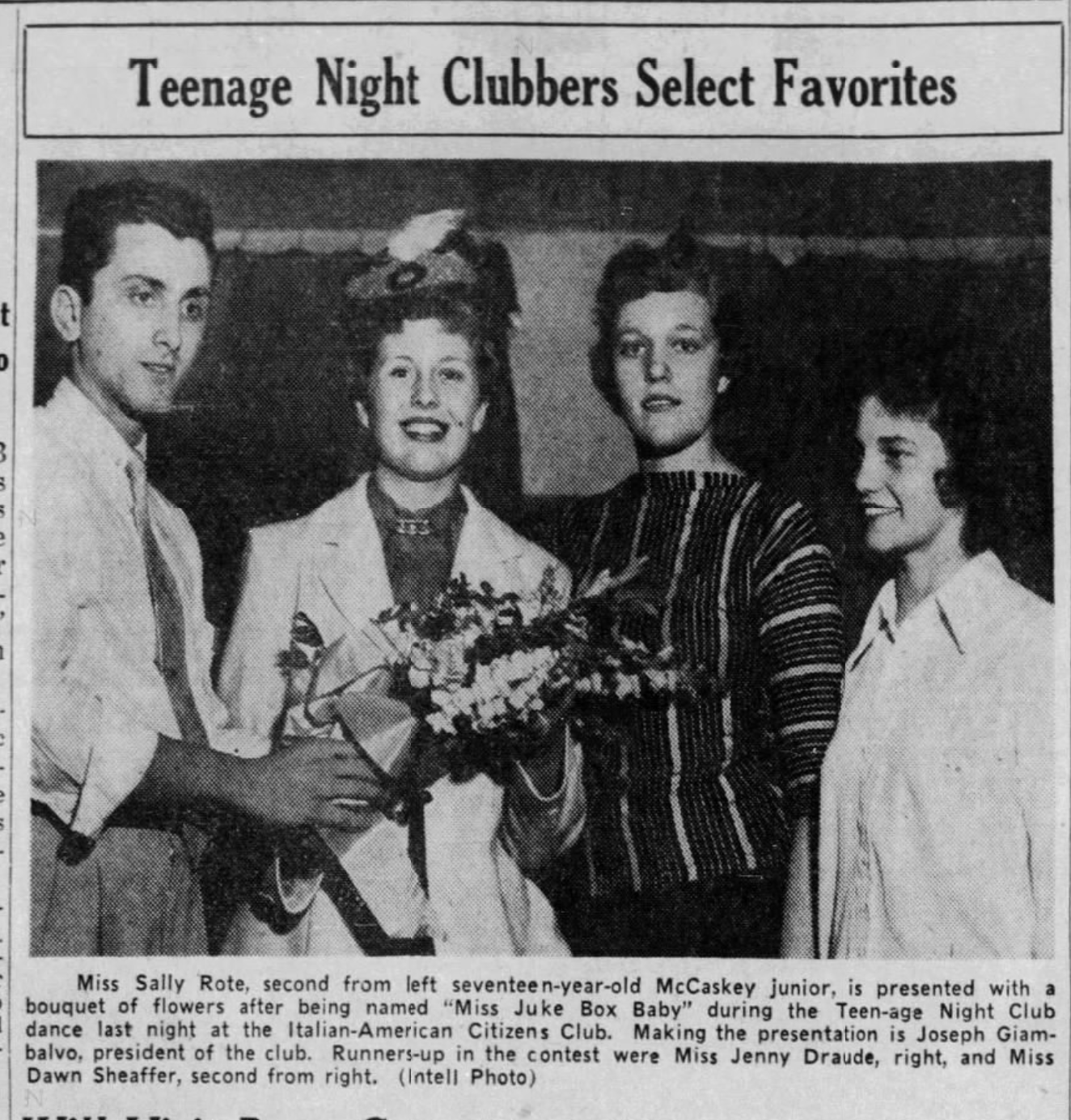
Posted By: Paul - Tue Aug 15, 2023 -
Comments (3)
Category: Awards, Prizes, Competitions and Contests, Beauty, Ugliness and Other Aesthetic Issues, Music, Technology, Twentieth Century
August 14, 2023
Charlemagne’s asbestos tablecloth
Legend has it that Charlemagne owned an asbestos tablecloth. This allowed him to perform an unusual party trick. After hosting a feast, he would entertain his guests by throwing the tablecloth in the fire. All the food and stains would burn off, but the cloth itself didn't burn. When removed the fire it was not only undamaged but also sparkling clean.The story can be found in a lot of sources, such as in the eleventh edition of the Encyclopedia Britannica (1911), in the article about asbestos. Or in the newspaper article below.

Vancouver Daily Province - Mar 27, 1940
But is there any truth to the legend? The best answer to this question I could find is in the book Charlemagne's Tablecloth (2004) by Nichola Fletcher. Most of the book isn't actually about Charlemagne (it's about the history of feasting), but in the afterword she looks specifically at the legend.
She notes that the ancient Greeks and Romans had created cloth out of asbestos. Pliny the Elder wrote about the existence of asbestos napkins. So it's possible that Charlemagne had an entire tablecloth made from the material. However, she was unable to find any reference to the story in medieval sources about Charlemagne. Frustrated, she eventually requested help from Donald Bullough, an expert on Charlemagne who taught at St. Andrews University. This was Bullough's reply:

Posted By: Alex - Mon Aug 14, 2023 -
Comments (1)
Category: Medieval Era, Fables, Myths, Urban Legends, Rumors, Water-Cooler Lore
Two by Michael Leunig
The creator's Wikipedia page.
Posted By: Paul - Mon Aug 14, 2023 -
Comments (0)
Category: Humor, Satire, Cartoons, Australia
August 13, 2023
Copacabana Chorus Introduces Alcoa Alumalure

Posted By: Alex - Sun Aug 13, 2023 -
Comments (1)
Category: Architecture, Advertising, 1950s
Knots For Restraint
Another entry in WU's eternal quest for the most boring documentary/instructional video ever.
Posted By: Paul - Sun Aug 13, 2023 -
Comments (3)
Category: Boredom, PSA’s, Technology, Twentieth Century
August 12, 2023
Scale in Soda-Fountain Seat
Watch your weight increase as you eat.
Popular Science - Dec 1938
Posted By: Alex - Sat Aug 12, 2023 -
Comments (0)
Category: Inventions, 1930s, Dieting and Weight Loss
Unlikely Reasons for Murder No. 16
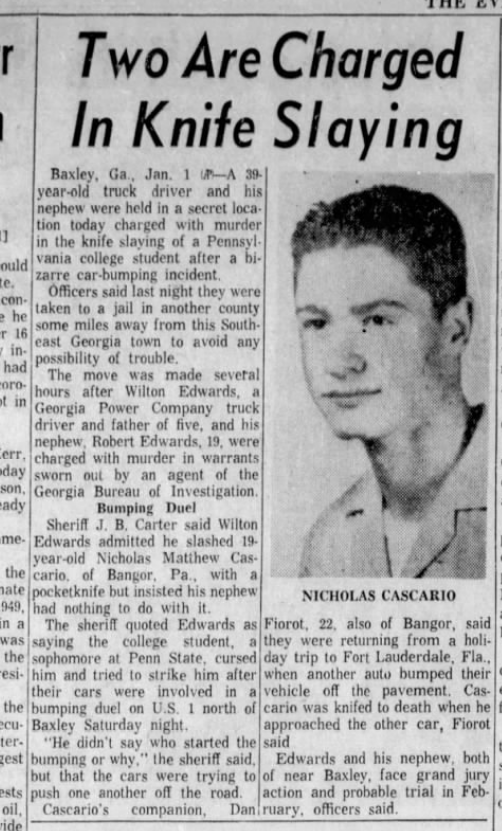
Source: The Evening Sun (Baltimore, Maryland) 01 Jan 1963, Tue Page 4
Posted By: Paul - Sat Aug 12, 2023 -
Comments (1)
Category: Death, 1960s, Cars
| Get WU Posts by Email | |
|---|---|

| Who We Are |
|---|
| Alex Boese Alex is the creator and curator of the Museum of Hoaxes. He's also the author of various weird, non-fiction books such as Elephants on Acid. Paul Di Filippo Paul has been paid to put weird ideas into fictional form for over thirty years, in his career as a noted science fiction writer. He has recently begun blogging on many curious topics with three fellow writers at The Inferior 4+1. Chuck Shepherd Chuck is the purveyor of News of the Weird, the syndicated column which for decades has set the gold-standard for reporting on oddities and the bizarre. Our banner was drawn by the legendary underground cartoonist Rick Altergott. Contact Us |

